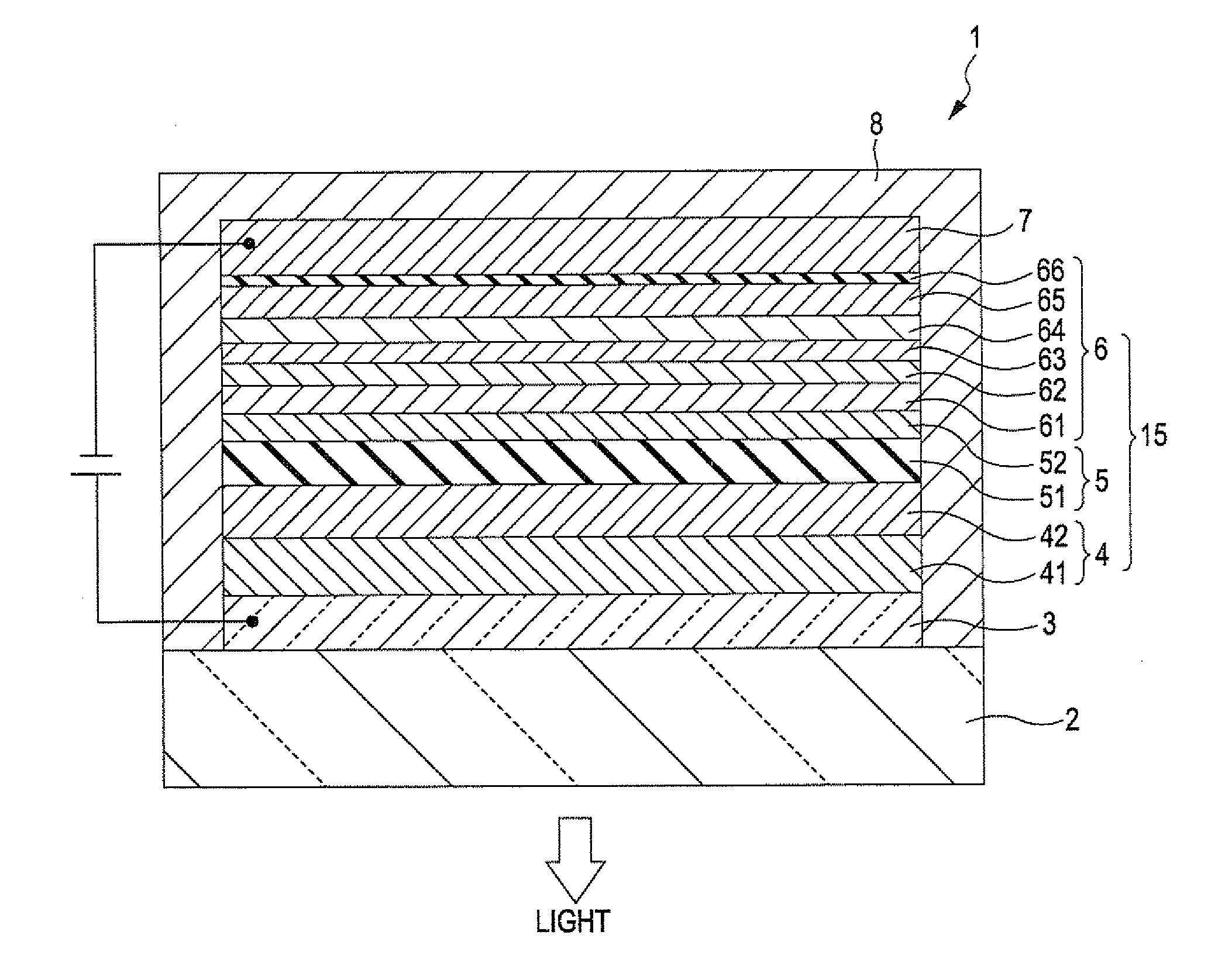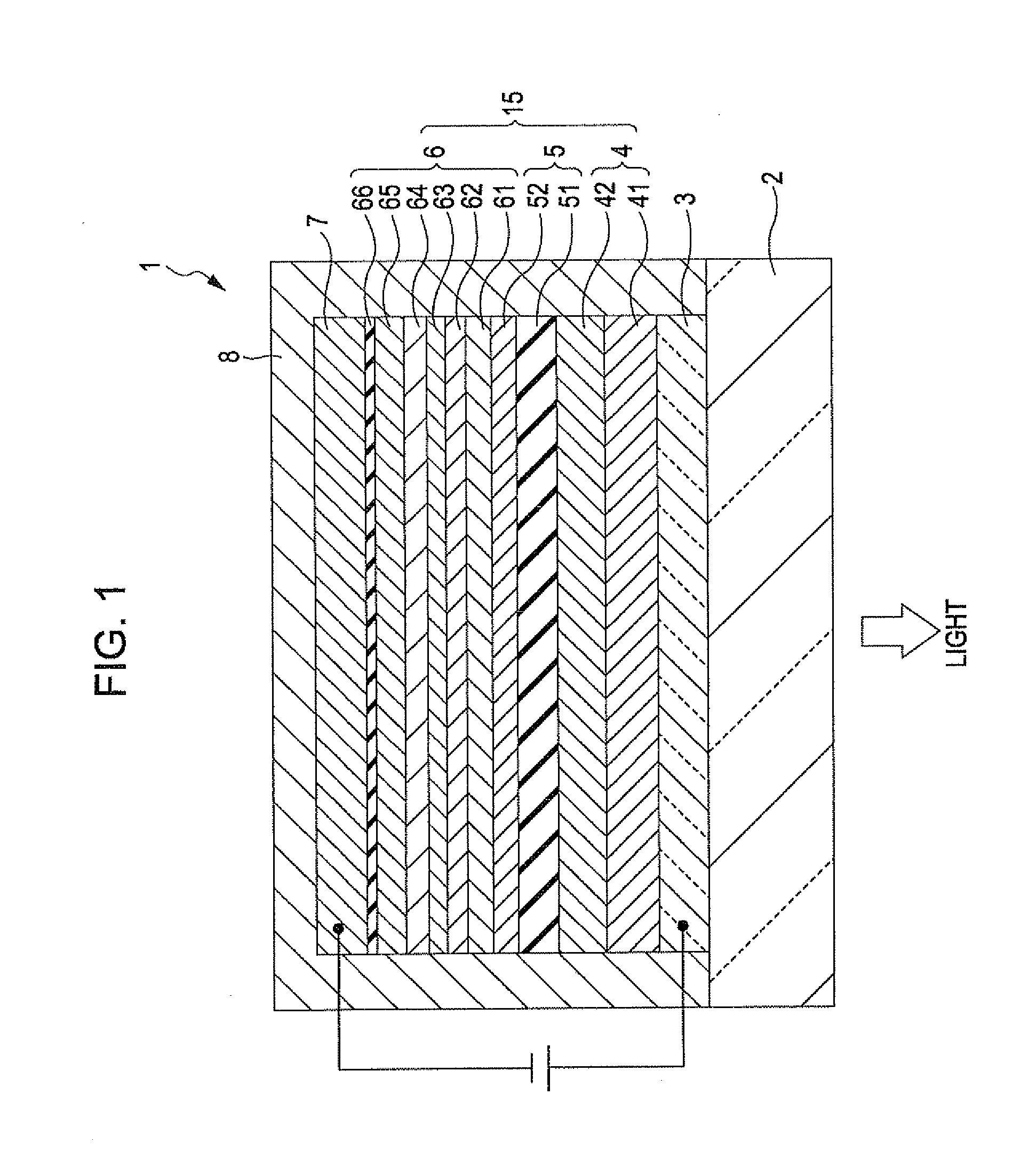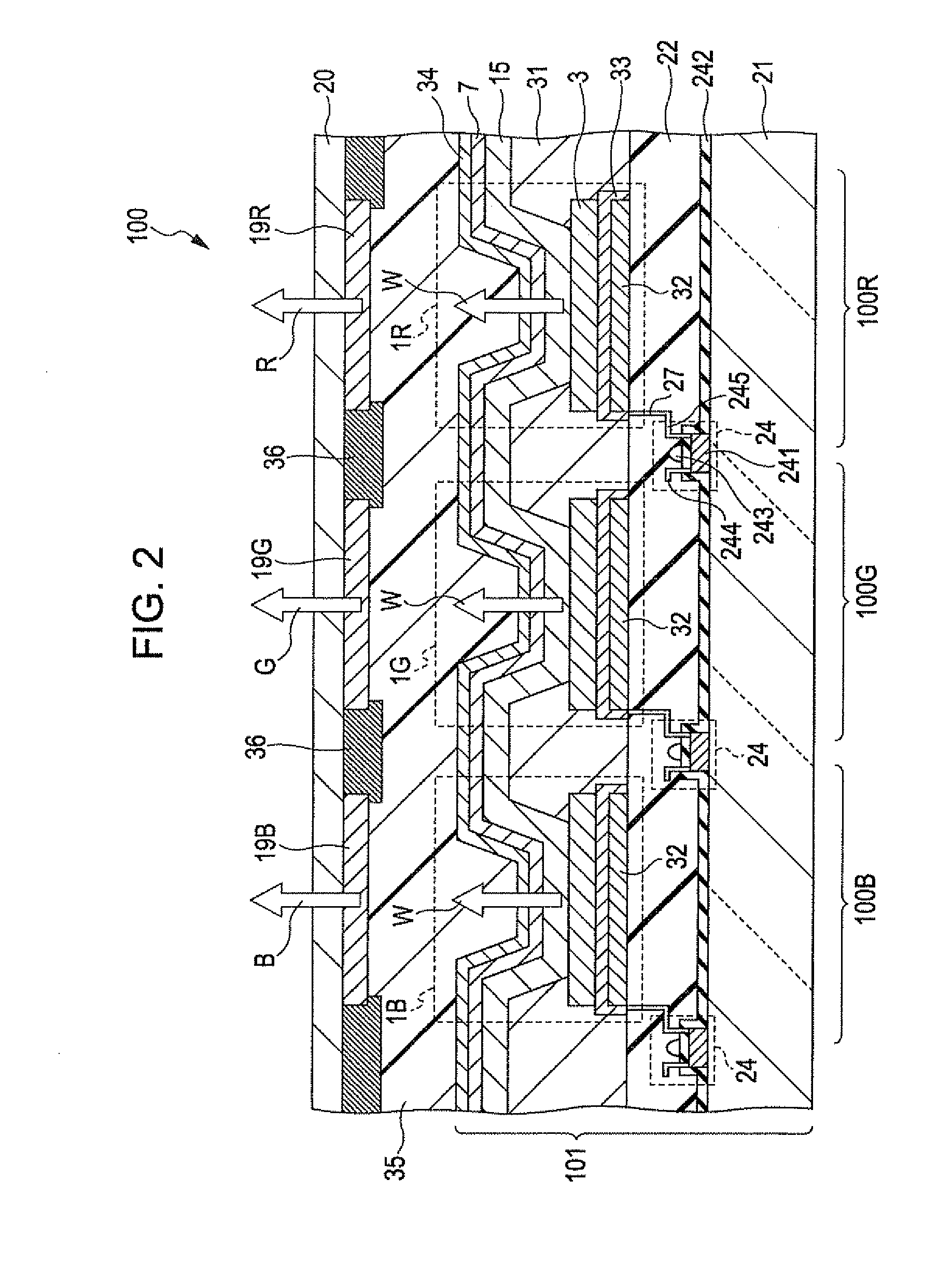Light-emitting element, light-emitting device, display device, and electronic apparatus
a technology of light-emitting devices and light-emitting elements, which is applied in the direction of thermoelectric devices, organic semiconductor devices, solid-state devices, etc., can solve the problems of phosphorescent materials, however, sensitive to impurities in the change of light-emitting properties, and the increase of driving voltage with the passage of time, so as to prevent the reduction of the electron transportability and electron injection properties of the re-type electron transport layer 51, the effect of enhancing
- Summary
- Abstract
- Description
- Claims
- Application Information
AI Technical Summary
Benefits of technology
Problems solved by technology
Method used
Image
Examples
example 1
First Process
[0246]A transparent glass substrate having an average thickness of 0.5 mm was prepared. An ITO electrode (anode) was formed on the substrate by a spattering technique so as to have an average thickness of 50 nm.
[0247]The substrate was dipped in acetone and 2-propanol in sequence and was then subjected to ultrasonic cleaning.
[0248]The resultant product was then subjected to oxygen plasma treatment.
Second Process
[0249]Subsequently, N,N′-di(1-naphthyl)-N,N′-diphenyl-1,1′-biphenyl-4,4′-diamine (NPD) was deposited on the ITO electrode by a vacuum deposition method, thereby forming a hole transport layer (hole transport layer of a first light emitter) having an average thickness of 50 nm.
Third Process
[0250]A first light-emitting layer was subsequently formed on the hole transport layer by a vacuum deposition method so as to have an average thickness of 30 nm.
[0251]In this case, a mixed material of BD102 (commercially available from Idemitsu Kosan Co., Ltd.) as a blue light-em...
example 2
[0265]The process configurations the same as those in the example 1 were employed except that the first light-emitting layer was formed so as to have an average thickness of 45 nm and except that the n-type electron transport layer of the carrier-generating layer was formed so as to have an average thickness of 25 nm, thereby manufacturing a light-emitting element.
example 3
[0266]The process configurations the same as those in the example 1 were employed except that the first light-emitting layer was formed so as to have an average thickness of 65 nm and except that the n-type electron transport layer of the carrier-generating layer was formed so as to have an average thickness of 5 nm, thereby manufacturing a light-emitting element.
PUM
 Login to View More
Login to View More Abstract
Description
Claims
Application Information
 Login to View More
Login to View More - R&D
- Intellectual Property
- Life Sciences
- Materials
- Tech Scout
- Unparalleled Data Quality
- Higher Quality Content
- 60% Fewer Hallucinations
Browse by: Latest US Patents, China's latest patents, Technical Efficacy Thesaurus, Application Domain, Technology Topic, Popular Technical Reports.
© 2025 PatSnap. All rights reserved.Legal|Privacy policy|Modern Slavery Act Transparency Statement|Sitemap|About US| Contact US: help@patsnap.com



